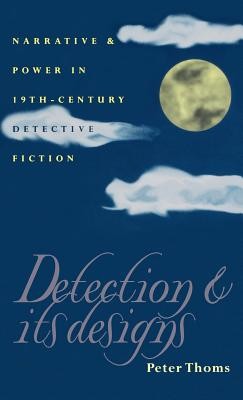
- We will send in 10–14 business days.
- Author: Peter Thoms
- Publisher: Ohio University Press
- ISBN-10: 082141223X
- ISBN-13: 9780821412237
- Format: 14.8 x 22.4 x 1.9 cm, hardcover
- Language: English
- SAVE -10% with code: EXTRA
Reviews
Description
Detective fiction is usually thought of as genre fiction, a vast group of works bound together by their use of a common formula. But, as Peter Thoms argues in his investigation of some of the most important texts in the development of detective fiction in the nineteenth century, the very works that establish the genre's formulaic structure also subvert that structure. Detection and Its Designs reads early detective fiction as a self-conscious form that is suspicious of the detective it ostensibly celebrates, and critical of the authorial power he wields in attempting to reconstruct the past and script a narrative of the crime.
In readings of Godwin's Caleb Williams, Poe's Dupin stories, Dickens's Bleak House, Collins's The Moonstone, and Doyle's The Hound of the Baskervilles, Thoms argues that the detective's figurative writing emerges out of a desire to exert control over others and sometimes over himself. Detection and Its Designs demonstrates that, far from being a naïve form, early detective fiction grapples with the medium of storytelling itself. To pursue these inward-turning fictions is to uncover the detective's motives of controlling the representation of both himself and others, a discovery that in turn significantly undermines the authority of his solutions.EXTRA 10 % discount with code: EXTRA
The promotion ends in 20d.20:13:09
The discount code is valid when purchasing from 10 €. Discounts do not stack.
- Author: Peter Thoms
- Publisher: Ohio University Press
- ISBN-10: 082141223X
- ISBN-13: 9780821412237
- Format: 14.8 x 22.4 x 1.9 cm, hardcover
- Language: English English
Detective fiction is usually thought of as genre fiction, a vast group of works bound together by their use of a common formula. But, as Peter Thoms argues in his investigation of some of the most important texts in the development of detective fiction in the nineteenth century, the very works that establish the genre's formulaic structure also subvert that structure. Detection and Its Designs reads early detective fiction as a self-conscious form that is suspicious of the detective it ostensibly celebrates, and critical of the authorial power he wields in attempting to reconstruct the past and script a narrative of the crime.
In readings of Godwin's Caleb Williams, Poe's Dupin stories, Dickens's Bleak House, Collins's The Moonstone, and Doyle's The Hound of the Baskervilles, Thoms argues that the detective's figurative writing emerges out of a desire to exert control over others and sometimes over himself. Detection and Its Designs demonstrates that, far from being a naïve form, early detective fiction grapples with the medium of storytelling itself. To pursue these inward-turning fictions is to uncover the detective's motives of controlling the representation of both himself and others, a discovery that in turn significantly undermines the authority of his solutions.

Reviews